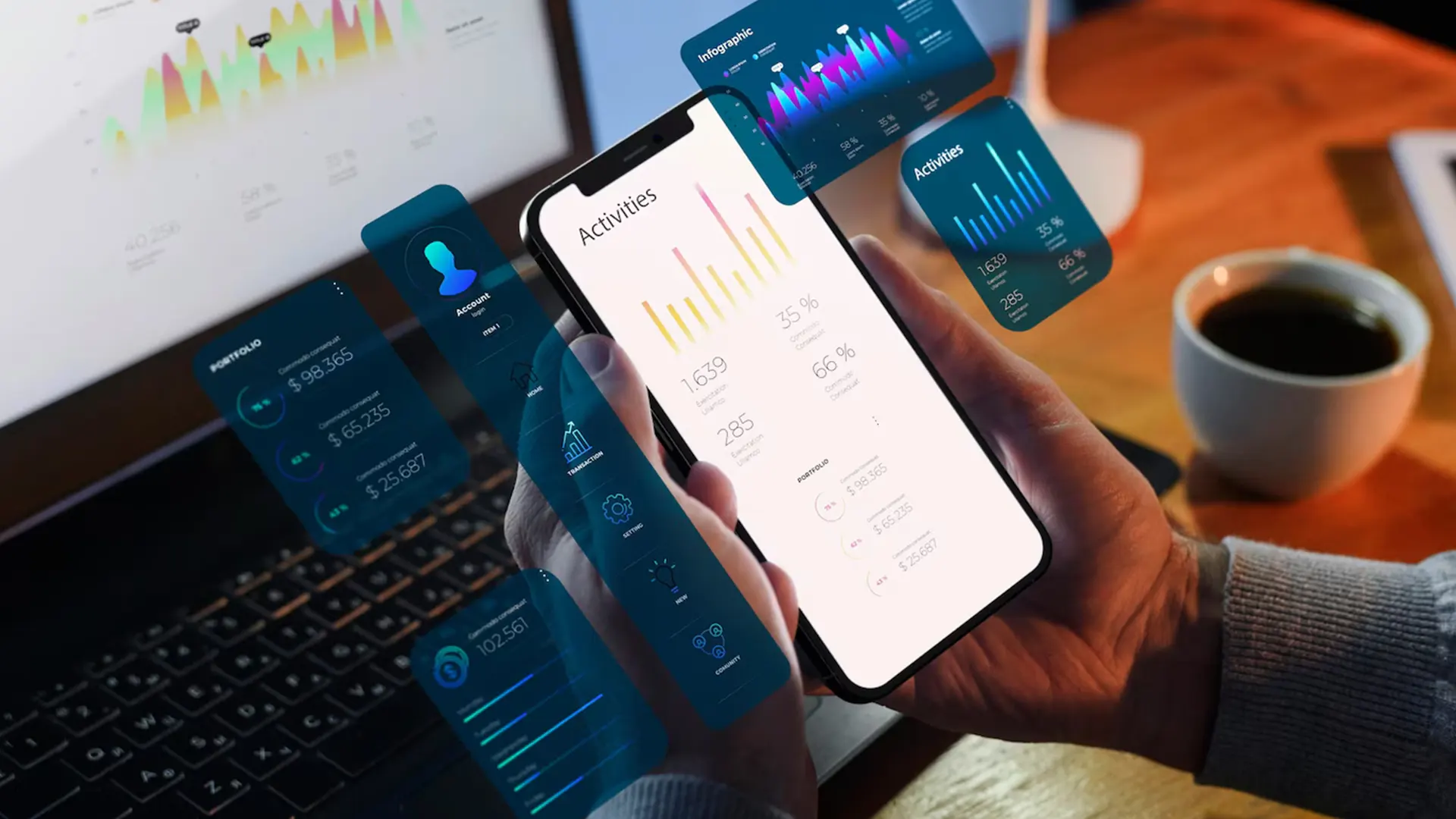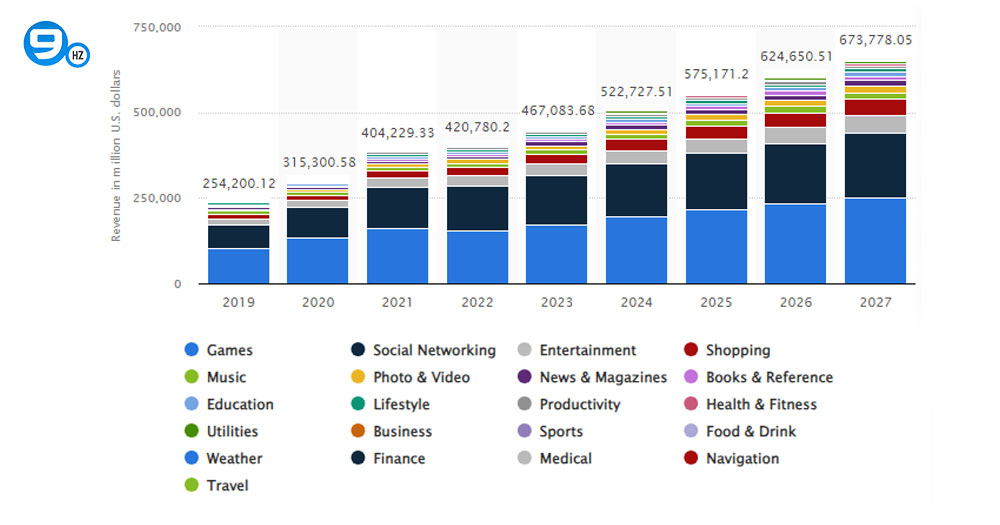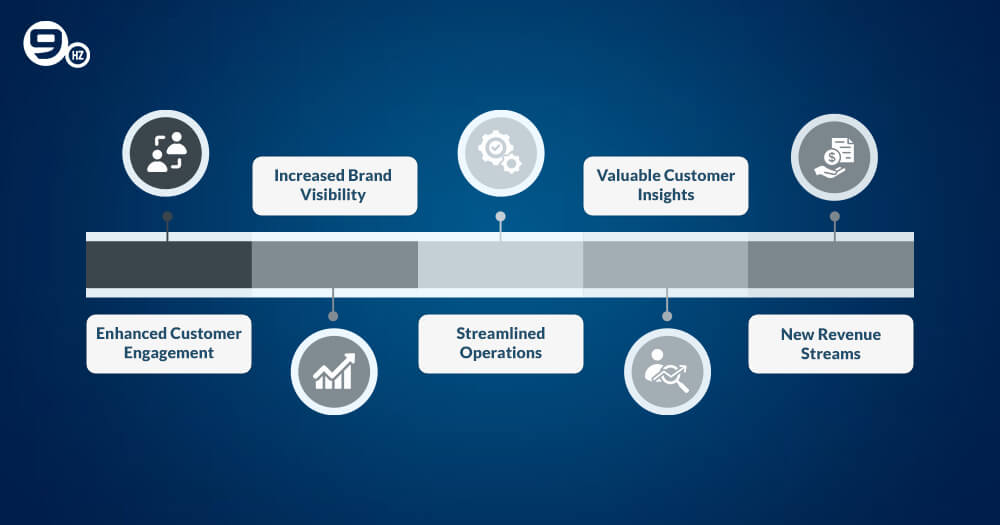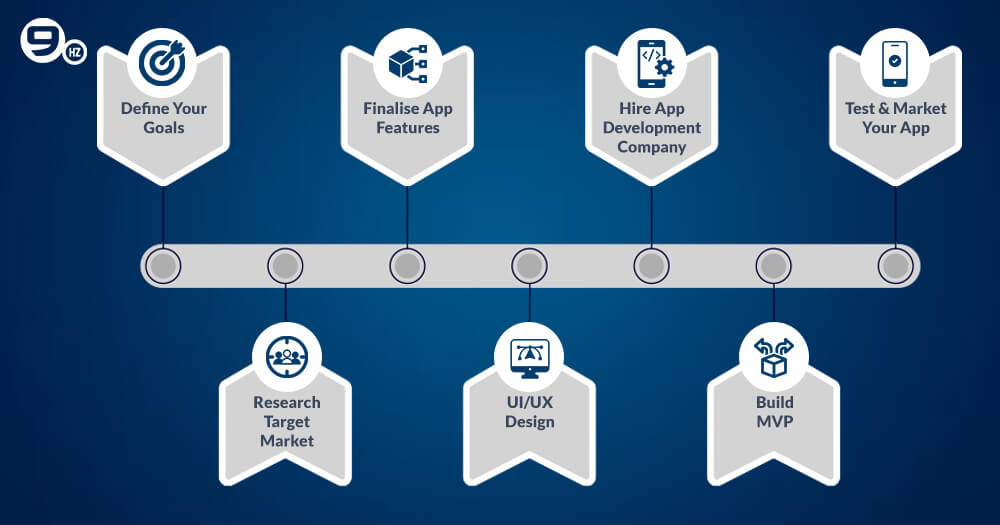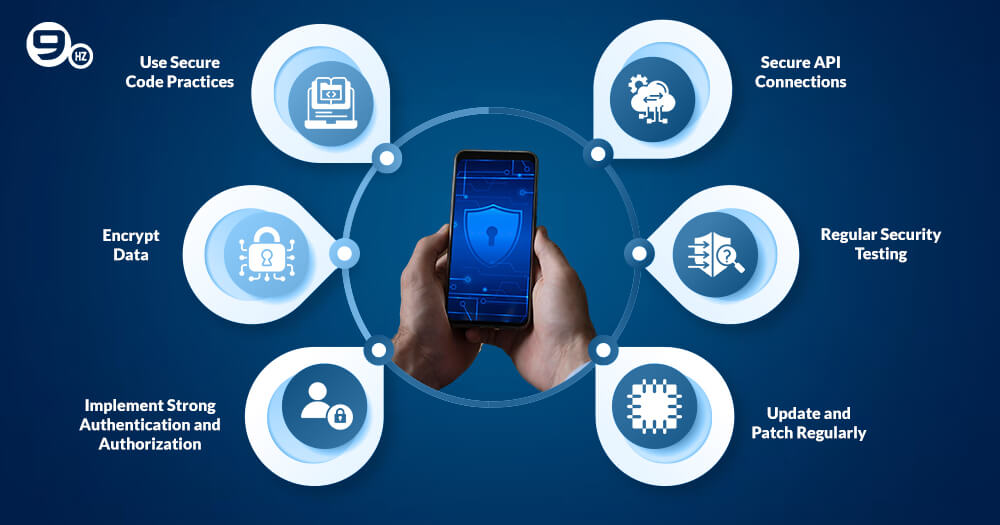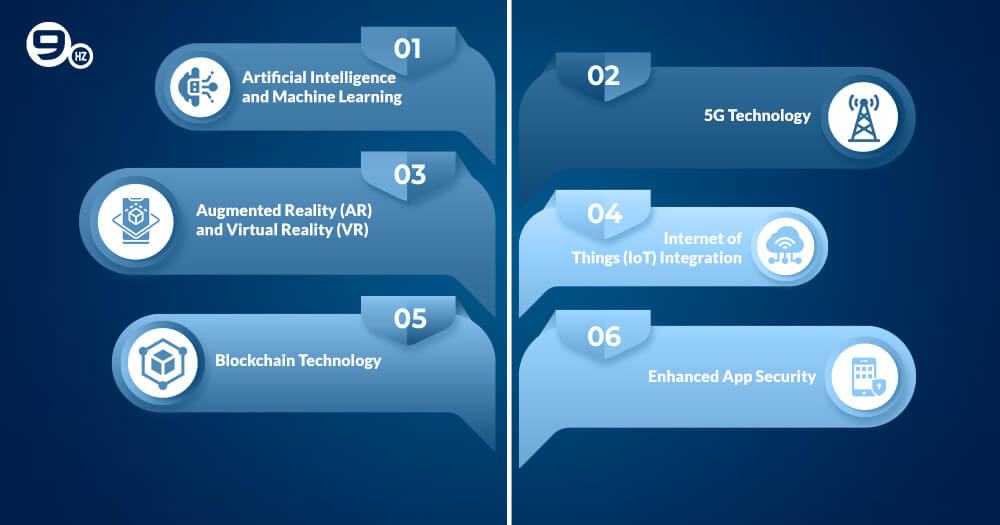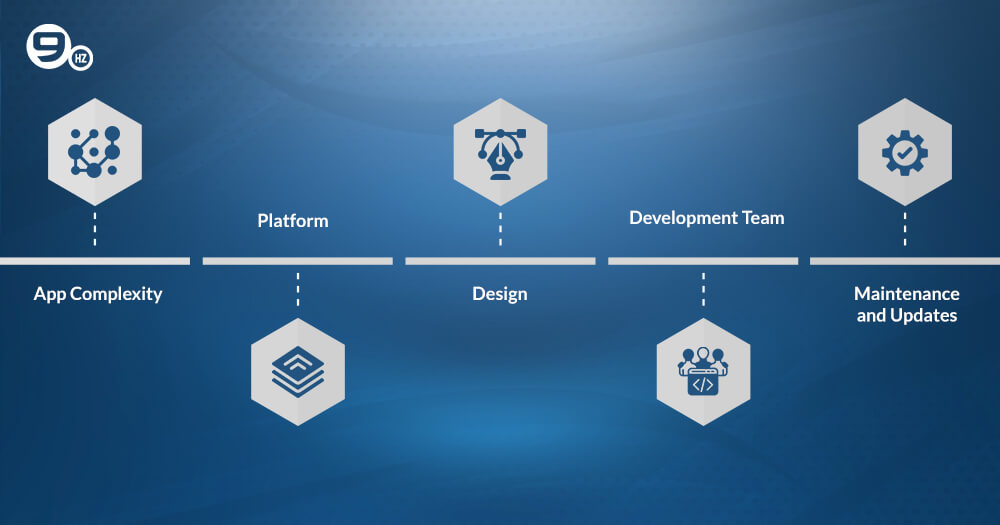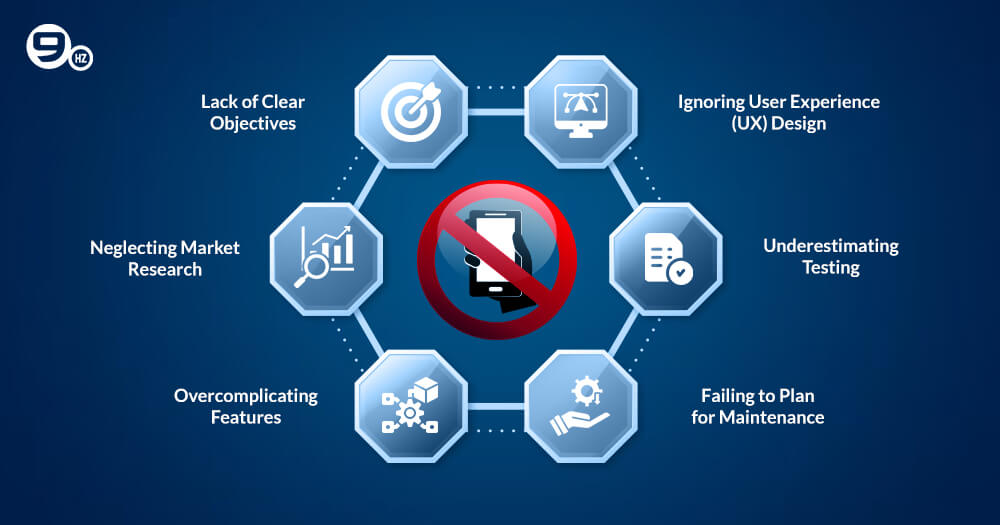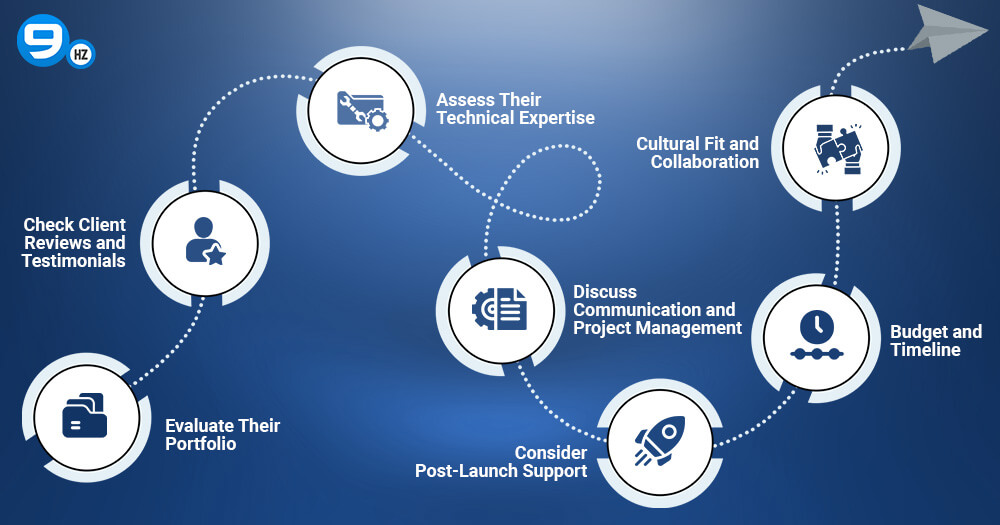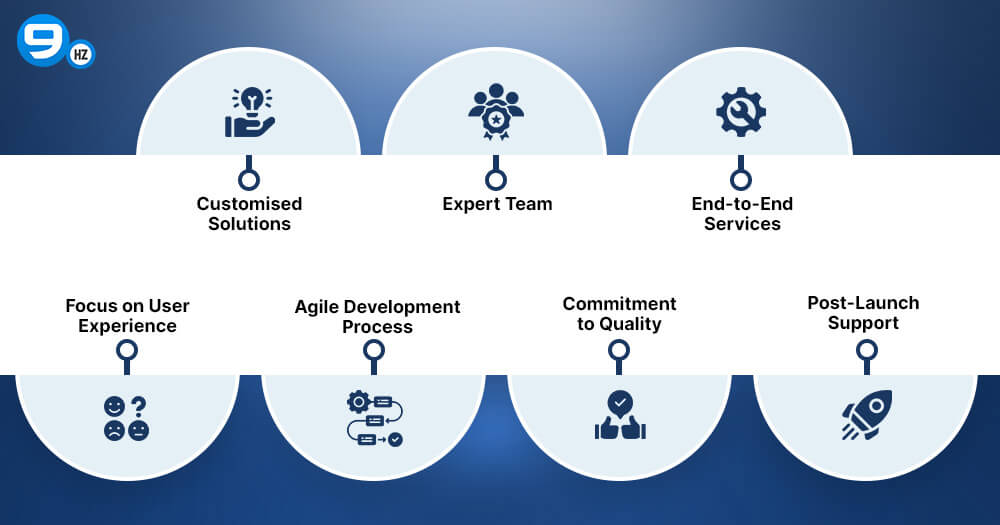In 2025, the global mobile application market continues to surge, driven by advancements in technology and the increasing reliance on mobile devices, causing a surge for Business Mobile App Development. According to Statista, by the end of 2025, more than 300 billion mobile apps are anticipated to have been downloaded globally, up from 218 billion in 2020. This staggering growth underscores the importance of mobile app development services for enterprises looking to engage with their customers more directly and in a personalised manner.
With over 3.8 billion smartphone users globally, companies which don’t take advantage of this trend run the risk of falling behind in the increasingly cutthroat digital market.
Source: www.statista.com
Mobile applications offer unparalleled opportunities for businesses to enhance customer engagement, streamline operations, and boost revenue. Whether you’re a startup looking to make a mark or an established enterprise aiming to stay ahead of the curve, investing in business mobile application development can provide the edge you need. while considering the app development cost, can provide the edge you need
This guide will lead you through the benefits of mobile app development as well as the process of mobile app development for businesses, the latest trends to watch out for, how to avoid common pitfalls.
Why Mobile App Development for Businesses is Essential?
Business mobile app development offers a powerful tool to enhance customer engagement, streamline operations, and boost brand visibility. Let us discuss why mobile application development for businesses is important:
1. Enhanced Customer Engagement
Businesses may communicate with their customers directly and individually with the help of mobile apps. By implementing innovative mobile app ideas businesses can maintain better relationships with their audience and increase customer retention by using push notifications, in-app messaging, and customized content to keep them informed and involved.
2. Increased Brand Visibility
A mobile app keeps your brand visible to customers at all times. With users spending significant time on their smartphones, having a branded app ensures your business is always within reach, increasing brand recognition and loyalty.
3. Streamlined Operations
Mobile apps can automate and optimise various business processes, reducing manual effort and improving efficiency. From managing customer inquiries to handling inventory, apps streamline operations and free up resources for other critical tasks.
4. Valuable Customer Insights
Mobile apps offer businesses access to valuable data on user behaviour, preferences, and trends. Analysing this data allows for better decision-making, targeted marketing strategies, and improved product offerings.
5. New Revenue Streams
Mobile apps open up additional revenue opportunities through in-app purchases, subscriptions, and advertising. By providing value to users, businesses can monetise their apps effectively and increase overall profitability. Additionally, cross-platform app development revenue enhances by reaching a broader audience across various devices and operating systems.
Mobile apps are an crucial tool for businesses looking to stay competitive, engage customers more deeply, and drive growth in today’s digital landscape. To leverage these opportunities, you can also contact one of the leading mobile app development companies in USA for expert guidance and support.
Business Mobile App Development: Step by Step
Mobile application development process is a complex and needs careful planning, in-depth investigation, and skillful implementation. Here’s a step-by-step guide to help you navigate this journey:
1. Define Your Goals
The first step in mobile app development is to clearly define your goals. What do you want to achieve with this app? Do you want to create a new revenue stream, improve internal operations, or boost client engagement? Understanding your primary objectives will guide your decision-making throughout the development process. Determine which major issues your app will address and establish quantifiable objectives to monitor its progress. Your app will meet your company goals and produce measurable outcomes if it is this clear.
2. Research Target Market
Understanding your intended audience is essential to developing an application that appeals to consumers. Begin by determining the demographics, interests, behaviours, and pain points of your potential users. To learn more about the requirements and expectations of your target market for an app similar to yours, conduct market research. Examine rival apps to find out which features people find appealing, where there are holes in the market, and how you can set your app apart. This research will help you design a product that not only meets market demand but also stands out in a competitive landscape.
3. Finalise App Features
Considering your objectives and market research, you can now outline the features your app will include. Start with the core functionalities that are essential to solving the primary problem for your users. Prioritise features that align with your business objectives and user needs. Remember, it’s important to strike a balance between offering a rich set of features and maintaining a simple, intuitive user experience. Avoid feature creep by focusing on what will provide the most value to your users and what can be realistically achieved within your budget and timeline.
4. UI/UX Design
The success of your app majorly depends on its design. Easy navigation, eye-catching design, and engaging user experience are all ensured by a well-designed user interface (UI) and user experience (UX). Work with experienced designers to create wireframes and prototypes that reflect the app’s structure and flow. The UI should be intuitive, with clear navigation, consistent design elements, and accessible features. The UX should focus on the user’s journey through the app, ensuring it is smooth and enjoyable. Testing your designs with real users during this phase can provide valuable feedback and help you refine the user experience.
5. Hire a Mobile App Development Company
Unless you have an in-house development team, you’ll need to partner with a custom mobile app development company for your businesses. Choose a partnering company with a proven track record, relevant experience, and technical expertise in the platforms and technologies you plan to use. Look for a team that offers end-to-end services, from design and development to testing and post-launch support. Clear communication, agile methodologies, and a collaborative approach are some key factors in choosing the right partner for enterprise application development. Make sure that the company understands your vision and can translate it into a functional, high-quality app.
6. Build MVP (Minimum Viable Product)
Before developing the full version of your app, consider creating a Minimum Viable Product (MVP). An MVP includes the essential features that define your app’s value proposition. It allows you to test your app with early users, gather feedback, and make improvements before a full-scale launch. The MVP approach minimises risks, saves time and resources, and ensures that you’re building an app that truly meets user needs. Use this phase to validate your ideas, refine features, and prepare for the larger development effort.
7. Test & Market Your App
To make sure your software satisfies quality requirements and runs properly, testing is an essential step. To find and address any problems, conduct several testing methods, including as usability, performance, and security tests. When your app is complete and ready, it’s time to properly promote it. Create a marketing plan that incorporates content marketing, social media marketing, mobile app store optimisation, and perhaps paid advertising. Your goal is to generate buzz, attract downloads, and engage users right from the launch. A successful launch plan can significantly impact your app’s visibility and adoption in the market.
8. Launch Your App
Now that the application is tested and promoted, it’s time to launch. Make sure your app satisfies all the requirements before submitting it to the relevant app stores (Google Play for Android and the Apple App Store for iOS). Carefully consider when to launch in order to optimise consumer downloads and visibility. Before releasing the app widely, think about doing a soft launch to test it with a smaller audience.
9. Post-Launch Activity
The launch is not the end of the work. Activities you do after your app launches are essential to its success. To find areas that need work, track important metrics, user reviews, and app performance. Update the software frequently to address issues, improve functionality, and remain pertinent to users’ demands. Maintain constant communication with your users to foster long-term satisfaction and loyalty through updates, new features, and customer service. These guidelines will help you in mobile application development for businesses that will satisfy your business goals and give users a worthwhile and entertaining experience.
How to Secure Your Mobile Application?
While you learn about mobile app development for businesses, you must also know that securing your mobile app is crucial to protect both your business and your users from potential threats. As cyberattacks become increasingly sophisticated, ensuring your app’s security is a top priority. Here are key steps to secure your mobile application:
1. Use Secure Code Practices
The foundation of a secure mobile app starts with writing secure code. Vulnerabilities in your code can be exploited by hackers to gain unauthorised access. Use secure coding techniques, such as output encoding and input validation and avoiding hardcoding sensitive information like API keys. Regularly update your code to fix known vulnerabilities and stay ahead of potential threats.
2. Encrypt Data
To safeguard sensitive information while it’s in transit and at rest, data encryption is necessary. Employ robust encryption methods, such as Transport Layer Security (TLS) for data transferred between the application and servers and Advanced Encryption Standard (AES) for data retained on devices. This ensures that even if data is intercepted, it cannot be easily read or used by unauthorised parties.
3. Implement Strong Authentication and Authorization
Robust authentication systems, like multi-factor authentication (MFA), aid in guaranteeing that your software is only accessible to authorized users. Instead of usi ng passwords alone, utilize secure user authentication techniques like OpenID Connect or OAuth. Role-based access control (RBAC) should also be used to make that users may only access features and data that are pertinent to their roles inside the app.
4. Secure API Connections
APIs are the backbone of many mobile applications, facilitating communication between the app and the server. However, insecure APIs can be a major security risk. Ensure that all API connections are secure by using HTTPS and requiring authentication for API access. Implement rate limiting to prevent abuse and regularly audit your APIs for vulnerabilities.
5. Regular Security Testing
To find and fix possible security issues, do routine security testing, such as penetration tests and vulnerability assessments. Use automated tools to scan your app for known vulnerabilities and conduct manual testing to simulate real-world attacks. Regular testing helps ensure that your app remains secure as new threats emerge.
6. Update and Patch Regularly
Updating your app’s dependencies and yourself is essential to ensuring security. Patch security holes on a regular basis and make sure third-party frameworks and libraries are up to date. Establish a procedure for reacting rapidly to security events, which should include patching vulnerabilities as soon as they are found. These procedures can help you greatly lower the chance of security lapses, protect your users’ data, and build trust in your mobile application. Prioritising security not only safeguards your business but also enhances the overall user experience.
Convert Your App idea into Reality
Types of App Development
Businesses have several options when it comes to mobile app development for businesses. Each type of app development has its advantages and limitations. Here’s a comparison:
| Type of App Development | Advantages | Limitations |
|---|---|---|
| Native App Development | High performance, better user experience, access to device-specific features | Higher development cost, longer time to market |
| Cross-Platform App Development | Code reuse across platforms, lower development cost, faster time to market | Compromised performance, limited access to native features |
| Progressive Web Apps (PWA) | No need for app store distribution; it works across all devices, is cost-effective | Limited offline functionality, limited access to device features |
Choose the right approach for mobile application development for businesses to meet your project goals and deliver a seamless user experience. There are three primary types of app development: Native, Cross-Platform, and Progressive Web Apps (PWAs). Every strategy has particular benefits and drawbacks, and selecting the right one depends on factors like your target audience, budget, and feature requirements.
1. Native App Development
Using the native programming languages of each platform-Java or Kotlin for Android, and Swift or Objective-C for iOS-native app developers make apps exclusively for a particular platform, like Apple App Store or Google Play Store.
Advantages
- Optimal Performance: They are optimised for their respective platforms, offering faster and more responsive performance.
- Full Access to Device Features: They can fully leverage device hardware and software capabilities, such as the camera, GPS, and sensors, providing a richer user experience.
- Better User Experience: They follow platform-specific design guidelines, resulting in a more intuitive and seamless user experience.
Challenges
- Higher Development Costs: Developing separate applications for iOS and Android can incur additional costs and require more effort.
- Maintenance Complexity: Managing two codebases requires additional effort in terms of updates and bug fixes.
2. Cross-Platform App Development
Developing cross-platform apps enables you to create apps that run on multiple platforms (iOS, Android, etc.) using a single codebase. Popular frameworks include React Native, Flutter, and Xamarin.
Advantages
- Cost-Effective: By reusing code across platforms, cross-platform development reduces app development costs and time.
- Faster Time to Market: With just a single codebase, you can simultaneously deploy your app on multiple platforms, speeding up the launch process.
- Consistent User Experience: Cross-platform frameworks enable you to maintain a consistent look and feel across different platforms.
Challenges
- Performance Limitations: Cross-platform apps may not perform as smoothly as iOS apps and android apps, especially when handling complex tasks or graphics-intensive features.
- Limited Access to Platform-Specific Features: Some platform-specific features may not have full support or require additional customisation.
3. Progressive Web Apps (PWAs)
PWAs are apps for the web that function similarly to iOS apps and android apps but they run in a mobile web browser. They offer features like offline access, push notifications, and home screen installation.
Advantages
- Broad Accessibility: PWAs work across all devices with a web browser, providing a broad reach without the need for separate apps.
- Cost-Efficient: Compared to iOS apps and android apps, PWAs have reduced development and maintenance expenses because they only use one codebase.
- No App Store Approval: PWAs don’t require approval from app stores, allowing for quicker deployment and updates.
Challenges
- Limited Access to Device Features: PWAs can only access specific device functionalities with restriction, which can limit their functionality compared to native apps.
- Performance Constraints: Even while PWAs are getting better, they might not be as effective as native apps, especially when it comes to speed and responsiveness.
Each type of app development offers distinct benefits, and the right choice depends on your business needs, budget, and target audience. You may make an informed choice that fits with your mobile strategy by being aware of these choices.
Mobile Application Development Trends Businesses Need to Look Out for (2025)
As technology evolves, so do the trends in mobile application development for businesses. Staying abreast of these trends can give businesses a competitive edge and enhance their app offerings. Here are some key trends to watch:
1. Artificial Intelligence and Machine Learning
Apps for mobile phones are being transformed by AI and ML because they allow for more creative features and personalized experiences. Whether you’re working with a generative AI development company or integrating AI into existing platforms, these technologies significantly improve user engagement and operational efficiency in a variety of ways, from chatbots that offer immediate customer care to recommendation engines that make product suggestions based on user behavior.
2. 5G Technology
The rollout of 5G networks is set to revolutionise mobile app performance. Thanks to its lower latency and faster speeds, 5G allows more affluent, more interactive experiences, such as high-quality video streaming, real-time gaming, and augmented reality (AR). Video streaming apps can become more responsive and offer new features that were previously impractical.
3. Augmented Reality (AR) and Virtual Reality (VR)
AR and VR are gaining traction in mobile apps, providing immersive experiences for users. AR applications, like virtual try-ons in retail and VR experiences for gaming and education, are becoming more mainstream, offering businesses innovative ways to engage their audience.
4. Internet of Things (IoT) Integration
As IoT devices become more prevalent, mobile apps are increasingly being used to control and interact with smart devices. Integration with IoT allows apps to manage home automation systems, wearables, and other connected gadgets, creating more interconnected and seamless user experiences.
5. Blockchain Technology
Blockchain is making its way into mobile app development to enhance security and transparency. It provides decentralised data management and secure transactions, which is particularly beneficial for apps dealing with sensitive information or financial transactions.
6. Enhanced App Security
With growing concerns over data breaches and cyber threats, mobile app security is a top priority. Encryption, secure coding techniques, and biometric authentication are examples of sophisticated security procedures that can be put into effect to protect user data and foster confidence.
By monitoring these patterns, companies may take advantage of state-of-the-art technologies, improve user experiences, and keep up with the quickly changing world of mobile apps.
Convert Your App idea into Reality
How Much Does it Cost to Build a Mobile App for Businesses?
| Cost Factor | Details | Estimated Cost |
|---|---|---|
| App Complexity | Basic app (news feed, contact form) | $10,000 – $50,000 |
| Sophisticated app (real-time chat, GPS, external services) | $50,000 – $150,000 | |
| Complex app (advanced integrations, large backend systems) | Over $150,000 | |
| Platform | Multiple platforms (iOS & Android) increases cost; Cross-platform reduces costs | $30,000 – $100,000 |
| Design | High-quality, custom UI/UX designs | $5,000 – $20,000 |
| Development Team | Costs vary by location (North America/Western Europe vs. Eastern Europe/Southeast Asia) | $50 – $200 per hour |
| Maintenance and Updates | Regular upgrades and maintenance | 15-20% of initial development cost annually |
Several factors, including the platform, development approach, complexity, and features, can greatly affect the cost of developing a mobile app for a business. Here’s a breakdown of key elements that influence the cost of mobile application development for businesses:
1. App Complexity
The cost of mobile app development for businesses is largely determined by its complexity. Generally, the price range for a basic app with features like a news feed or contact form is between $10,000 and $50,000. The cost of more sophisticated apps can run from $50,000 to $150,000 and include features like real-time chat, GPS navigation, and interaction with outside services. Apps that are really complicated and have sophisticated integrations, large backend systems, or bespoke capabilities might cost more than $15,000.
2. Platform
Developing for multiple platforms (iOS and Android) generally increases the cost. There must be distinct development procedures for native apps on each platform, while cross-platform frameworks can help reduce costs by allowing a single codebase for both platforms. Cross-platform development usually costs between $30,000 and $100,000, depending on the app’s complexity.
3. Design
In app development, the design of the user interface (UI) and user experience (UX) is essential. High-quality, custom designs that ensure an engaging user experience can add to the cost. Expect to pay between $5,000 and $20,000 for comprehensive design services.
4. Development Team
The rates of development teams vary based on their location and expertise. Hiring a development team in North America or Western Europe is typically more expensive than outsourcing to regions like Eastern Europe or Southeast Asia. Per hour costs can range from $50 to $200, depending on the area and the team’s experience.
5. Maintenance and Updates
The app must receive regular upgrades and maintenance to be secure and useful. The budget for post-launch support can cost 15-20% of the initial development cost annually.
Understanding these factors helps businesses estimate the budget for mobile application development for businesses and make informed decisions about their mobile strategy.
Mistakes to Avoid While Developing an App for Business
The mobile app development process is so delicate that it can be fraught with challenges. Avoiding common pitfalls can significantly enhance the chances of your app’s success. Here are key mistakes to steer clear of during the process of mobile application development for businesses:
1. Lack of Clear Objectives
One of the most critical mistakes is failing to define clear objectives for the app. Without a well-defined purpose and goals, the development process can become unfocused, leading to a product that doesn’t meet user needs or business objectives. Clearly state the goals you have for your app, such as increasing customer engagement, streamlining operations, or generating new revenue streams.
2. Neglecting Market Research
Skipping thorough market research can result in an app that doesn’t resonate with your target audience. Understanding your users’ needs, preferences, and behaviours is crucial for creating a valuable and relevant app. Do market research to learn more about user expectations, analyse competitors, and identify market gaps that your app can address.
3. Overcomplicating Features
Adding too many features can overwhelm users and complicate the app’s design. Focus on delivering core functionalities that address your primary objectives and user needs. An overcomplicated app can lead to a poor user experience and increased development and maintenance costs. Start with an MVP (Minimum Viable Product) to test essential features before adding additional functionalities.
4. Ignoring User Experience (UX) Design
A well-designed user interface (UI) and user experience (UX) is crucial for app success. Low adoption rates can result from irritated users due to poor design. Make sure your software is visually appealing, simple to use, and intuitive. Invest in professional design services and conduct usability testing to refine the user experience.
5. Underestimating Testing
Inadequate testing can result in a buggy or unstable app, damaging your brand’s reputation and user trust. Before launching, thoroughly test your product on a range of mobile devices and operating systems to find and address any problems. Test the app’s functionality, performance, and security to make sure it runs well in a variety of scenarios and is secure.
6. Failing to Plan for Maintenance
Post-launch maintenance is essential for keeping your app functional and up-to-date. Neglecting this aspect can lead to outdated features, security vulnerabilities, and performance issues. Plan for ongoing updates, bug fixes, and enhancements to maintain app quality and user satisfaction.
By avoiding these common errors, businesses can develop a more effective, user-friendly app that meets their goals and delivers a positive experience to their audience.
How to Hire a Company for Business Mobile App Development?
Hiring the right mobile app development company is an important step in ensuring the success of your app. Here’s a step-by-step guide on how to make the right choice:
1. Evaluate Their Portfolio
Start by examining the company’s portfolio. Seek out projects that are comparable to your ideal application in terms of scale and complexity. This will give you insight into their design capabilities, technical expertise, and industry experience.
2. Check Client Reviews and Testimonials
Customer testimonials offer valuable insights regarding the reliability of the company, communication, and ability to meet deadlines. Platforms like Clutch, GoodFirms, and Google Reviews are good places to check for unbiased feedback.
3. Assess Their Technical Expertise
Ensure the company has expertise in the technologies you plan to use for your app. Whether it’s native development (iOS/Android), cross-platform tools (Flutter, React Native), or back-end technologies, their technical prowess is key to a successful project.
4. Discuss Communication and Project Management
Clear and consistent communication is essential for a smooth development process. Ask about their project management approach, the tools they use (like Jira, Trello, or Asana), and how often they provide updates. Ensure they are open to feedback and flexible in their approach.
5. Consider Post-Launch Support
App development doesn’t end with the launch. You’ll need ongoing support for updates, bug fixes, and potential feature enhancements. Select a company that provides thorough post-launch maintenance and support.
6. Budget and Timeline
Discuss your budget and timeline upfront. A reputable company will provide a detailed proposal with cost breakdowns and timelines for each phase of development. Ensure there are clear terms regarding changes in scope, additional costs, and deadlines.
7. Cultural Fit and Collaboration
The company should align with your business values and goals. A good cultural fit ensures smoother collaboration and a better understanding of your vision. Trust your instincts during the initial meetings to assess their enthusiasm and commitment to your project.
How The NineHertz Help You in Business App Development?
The NineHertz is one of the top iOS app development services and Android app development services that has a track record of providing creative, high-caliber solutions to companies in a range of industries. Here’s how The NineHertz can help you in your business app development journey:
1. Customised Solutions
The NineHertz understands that each company is different. They work together with clients to fully understand their specific needs before developing customized mobile apps that satisfy user and business objectives.
2. Expert Team
With a team of skilled developers, designers, and project managers, The NineHertz ensures that every aspect of your app development is handled by experts. They bring deep technical knowledge and creative problem-solving skills to every project.
3. End-to-End Services
From ideation and conceptualisation to design, development, testing, and post-launch support, The NineHertz offers end-to-end mobile app development services. This comprehensive approach ensures a seamless development process and a robust final product.
4. Focus on User Experience
The NineHertz places a strong emphasis on UI/UX design, ensuring that your app is not only functional but also provides an intuitive and enjoyable user experience. Their design team works to create interfaces that are visually appealing and easy to navigate.
5. Agile Development Process
Using an agile development methodology, The NineHertz ensures flexibility, quick iteration, and continuous feedback integration. This approach helps in accommodating changes, refining features, and delivering a product that meets client expectations.
6. Commitment to Quality
The NineHertz is committed to delivering high-quality apps that are reliable, secure, and perform well. They conduct rigorous testing at each stage of development to ensure the app is bug-free and ready for market.
7. Post-Launch Support
After your app is live, NineHertz continues to provide support through regular updates, maintenance, and optimisation services. This ensures that your app stays relevant and performs optimally in the long run.
Conclusion: Mobile App Development for Businesses
Nowadays, having a mobile app is no longer a luxury but a necessity for businesses aiming to stay competitive and connected with their audience. Mobile apps offer a direct channel to engage customers, streamline operations, and drive revenue growth.
However, building a successful app requires more than just a good idea-it demands careful planning, a clear understanding of the market, and the right development partner. The NineHertz stands out as the best choice for mobile application development for businesses looking to develop a mobile app. With their extensive experience, commitment to quality, and a client-centric approach, they have the expertise to bring your vision to life.
Whether you need a simple app or a complex, feature-rich platform, The NineHertz possesses the abilities and assets necessary to produce a product that surpasses your expectations. Partner with The NineHertz for mobile app development for businesses and take the first step towards transforming your idea into reality.
FAQ’s: Mobile Application Development
Let us look at some frequently asked questions regarding mobile application development for businesses.
Q1. Why Is Mobile Application Development Important In 2025?
In 2025, mobile application development for businesses will be essential as it offers businesses a personalized and direct means of communicating with their clientele. With the growing number of people owning smartphones, mobile apps-which provide ease, accessibility, and real-time communication-have emerged as a crucial point of contact for consumers. They also help companies keep ahead of the competition, simplify operations, and gather useful data.
Q2. How Long Does It Take to Make an App?
The complexity of the app, its feature count, the platforms (iOS, Android, or both), and the development methodology (native or cross-platform) all affect the duration to develop a mobile app. More complicated apps might take up to 12 months to design, whilst simpler apps can be completed in three to six months on average.
Q3. What are the Common Mistakes to Avoid When Building a Mobile App?
Common mistakes to avoid during mobile application development for businesses are:
- Skipping market research leading to an app that doesn’t meet user needs.
- Overloading the app with too many features which can compromise user experience.
- Ignoring UI/UX design resulting in a poorly designed app that frustrates users.
- Inadequate testing, which can lead to bugs and performance issues.
- Neglecting security putting user data at risk.
Q4. How Much Does it Cost to Build a Mobile App?
A mobile application’s complexity, functionality, design, platform, and development methodology all affect how much it costs to produce. A somewhat complex app might cost anywhere from $50,000 to $100,000, whereas a simple app might cost between $10,000 and $50,000. Advanced features in extremely complicated programs can cost anywhere from $100,000 to $500,000 or more. The final cost for mobile application development for businesses is determined by the features you select and your unique specifications.
Great Together!
